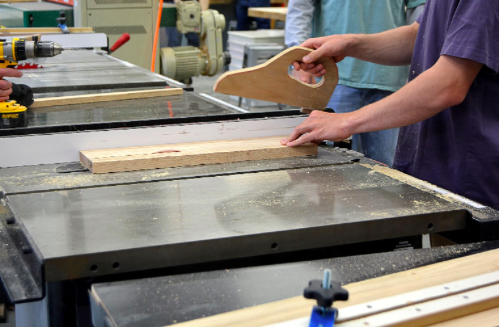
In high school, both parents and teachers often stress the importance of classes that are in the academic core — such as language, mathematics, science, and history — overlooking the value of classes that don’t fall under these traditional categories. Woods provides a hands-on, non-traditional style of learning that enables students to learn skills and concepts that they can apply directly to their daily lives while promoting individualism.
“I think I like woods because it gives kids who may not feel like they have a real home in math or science or social studies, it gives them an opportunity to do something else. It also could breed students to work construction in the future,” stated Woods I and Graphic Communications teacher Mr. Jeremy Gerlach, who built houses in between his college years.
Freshman and current Woods I student Bridget Horvath explained why she believes the class is beneficial to take.
“We can learn something that isn’t typically part of the school curriculum, and it will still help us in the future by making us more self-reliant,” stated Horvath.
Mr. Gerlach reflected: “Giving them (the students) the knowledge and even being able to do some of the stuff on their own in their own house, like trimwork or not being afraid of the tools and things like that, that was me as a little kid. I loved using all the saws, I loved using any equipment I could get my hands on, not all schools have opportunities like that — so for us to still have something like that for the kids to do — it’s an outlet for the kids to come, you know, feel good about something they’re doing and most kids really enjoy it.”
Along with many of the applied arts and art rooms, the woodshop room is located in the “dungeon,” specifically, room 014.
Woods consists of two different classes, Woods I and Woods II, both of which are semester-long courses open to all grade levels.
Sophomore Lexi Acosta explained why she chose to take Woods first semester this school year.
“I think fixing stuff and making things by yourself is pretty cool and kind of a life skill you should have,” she said.
Woods I includes three main projects that students tackle during the semester: a cutting board, a step stool or bench, and an Adirondack chair. According to Mr. Gerlach, students that progress quicker with their chair can make an ottoman in addition, which is a footrest or bench chair.
Before students can even get started on their first project, however, they must spend about two weeks going over safety guidelines, which may not be very interesting to sit through, but in a class like woods, they are especially important.
In addition, students are tested on these guidelines and must pass each test with
100 percent accuracy, according to Mr. Robert Kelch, a Woods II, Auto and Electronics teacher
“The most difficult part of the class was having to do all the safety tests the first two weeks, not because they were hard, but because they were so boring,” explained Acosta
Mr. Gerlach shared a similar opinion.
“We spend just about a week of actual class time going over safety. It’s really boring, it’s very tedious for the kids, but they have to know [it]. For me, the hardest part about teaching a class is the fact that they need to know that if they miss one thing that could be them cutting off a finger or getting seriously injured. The hardest part for me is the stress…And making sure that kids are actually safe and have an understanding of what they’re doing on every machine and that part is hard…I definitely got grey hair my first year teaching,” laughed Mr. Gerlach.
Horvath believes safety is a crucial part of the class.
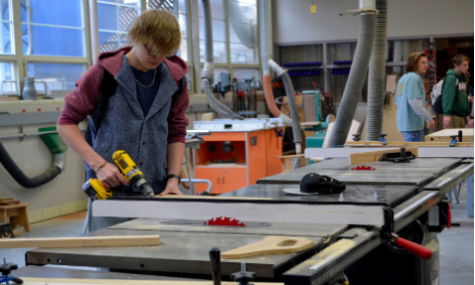 “Safety is important because if you forget one little step when working on a machine, you can end up being seriously injured or the project could be ruined,” explained Horvath.
“Safety is important because if you forget one little step when working on a machine, you can end up being seriously injured or the project could be ruined,” explained Horvath.
Mr. Gerlach pointed out that the first project, the cutting board, is pretty simple. After completing this project, students will have learned how to glue, clamp, and work with a majority of the machines in the classroom. Each project gets a bit more difficult.
With all the tedious work that is necessary to do to complete each piece, the class can sometimes be a bit repetitive, but students believe the final product is worth the effort.
“My favorite piece was probably the Adirondack chair. I mean, it took a really long time to finish, which was kind of annoying, but it’s really cool to see something that you made and are actually able to use,” stated Acosta, who plans to take Woods II next year.
Mr. Gerlach shared a similar opinion and claimed that completing each project can be quite rewarding, and actually seeing the final product is what drives students to continue their woods experience and enroll in Woods II.
“It’s that final hoorah (when a project is completed) that really gets the kids to take Woods II…the stuff that we make gets so many parent compliments that makes us as teachers feel good too because they like seeing what the kids can do and they’re in awe when their kids can make an Adirondack chair or make the step stool and they just–they think it’s so wonderful and great. It really is the kid doing it. 90 percent of what they do is them, not us. We teach them what to do and they then do it, so it’s fun and most kids really like it. A lot of kids take Woods II,” stated Mr. Gerlach.
Unlike Woods I, in Woods II, students have the freedom to choose what they construct, as long as is appropriate and within their capabilities. Students are not permitted to make any kind of weapon, including axes, swords, and bow and arrows, according to
Mr. Kelch.
“Within reason [is] basically [what it] comes down to. Is a student capable of doing the actual project?…is [it] something they can finish by the end of the semester? Some kids come in and they do pretty basic projects, they’ll do two or three projects. Other kids will come in and they’ll do one large project,” explained Mr. Kelch.
One piece, for example, that a student created was a poker table.
“I had a kid make a poker table–which was phenomenal and he actually used. He had a friend that was in Graphics and he screenprinted his college logo on the felt and then felted the table in class. That was the coolest project that a student’s made,” recalled Mr. Gerlach.
Some popular pieces are aquatic pieces like canoes and boat paddles, as well as patio furniture, like Adirondack chairs or swings.
This freedom is another reason why students choose to take Woods II. Some students end up even taking Woods II for two semesters after taking Woods I the previous year.
Current Woods II student and senior Henry Burns has been working on his project since the end of first semester.
“I am working on a stand-up paddle board. I chose this piece because when I finish it, I want to use it at my summer house in New Jersey,” explained Burns.
“The most difficult thing about this class is definitely the time restrictions. Only working for about a total of 40 minutes a day [makes it] hard to crank out projects,” he added.
Aside from the educational aspect of the class, another key element of the class is its unique environment, as it allows for a strong relationship between the teacher and students.
“Personally, I think the best part of Woods is the teachers. They are hilarious and will always make you laugh. I have now had Mr. Kelch and [Mr.] Gerlach and [I] think that they are by far two of the funniest people in the school,” said Burns.
Mr. Gerlach explained his perspective.
“I feel like I relate to a lot of the kids. So instead of always concentrating on woodworking, kids ask questions and we get off subject a little bit…99 percent of the time, we are doing what we are supposed to do and that one percent you know we might spend 15 minutes and might have a discussion about a kid’s vacation and how wonderful it was,” shared Mr. Ger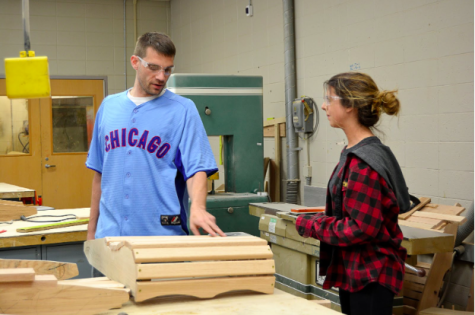 lach. “I feel like I really get to know the kids quite well as compared to a lot of other teachers… Woods is 90 percent the students working and maybe 10 percent me actually showing them what to do. So I have a lot more opportunity to talk with the kids, which is fun I really enjoy that part.”
lach. “I feel like I really get to know the kids quite well as compared to a lot of other teachers… Woods is 90 percent the students working and maybe 10 percent me actually showing them what to do. So I have a lot more opportunity to talk with the kids, which is fun I really enjoy that part.”
With the independence and direct learning style of woods, the class is truly a special and unique experience for students, whether they are considering pursuing a career in construction or architecture, or merely interested in developing a useful life skill.
“[Woodworking is] a life skill. It’s the most common male adult hobby in this country…Teaching them (students) a life skill, something they can use from the time they’re 17 until they’re 70, is probably one of the unique things about the class,” explained Mr. Kelch.



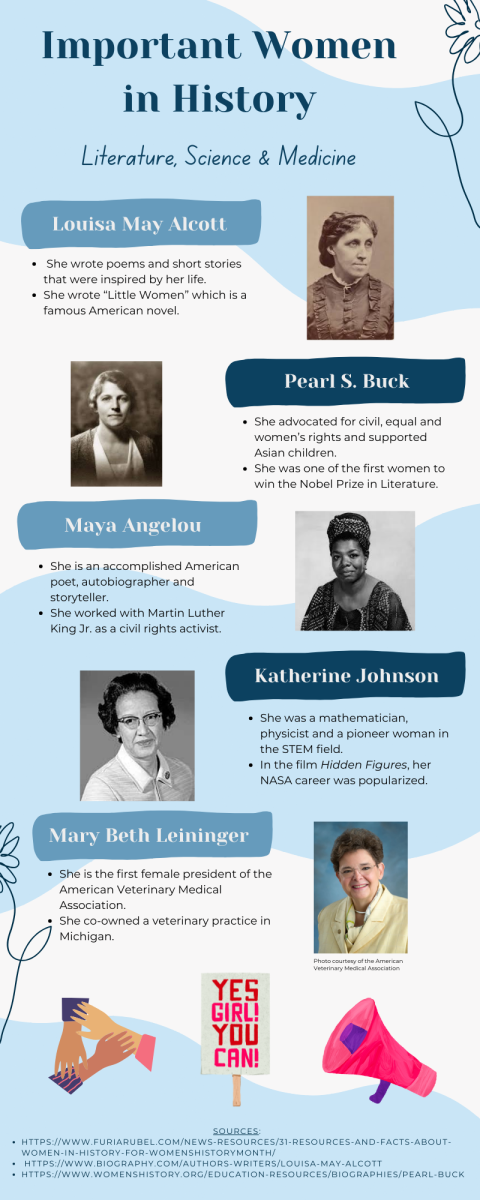
![Mr. Scott Brzezinski poses for a photo while working at ShurWay Moving in Libertyville where his cousin Mr. Eric Brzezinski also works. He appreciates that LHS prepares students for their future by providing a variety of opportunities. “[There are] a lot of different resources that LHS has between colleges and counselors,” he said. (Photo courtesy of Mr. Scott Brzezinski)](https://www.lhsdoi.com/wp-content/uploads/2025/02/Mr.-Scott-Brzezinski-Photo-2-1200x1200.jpg)
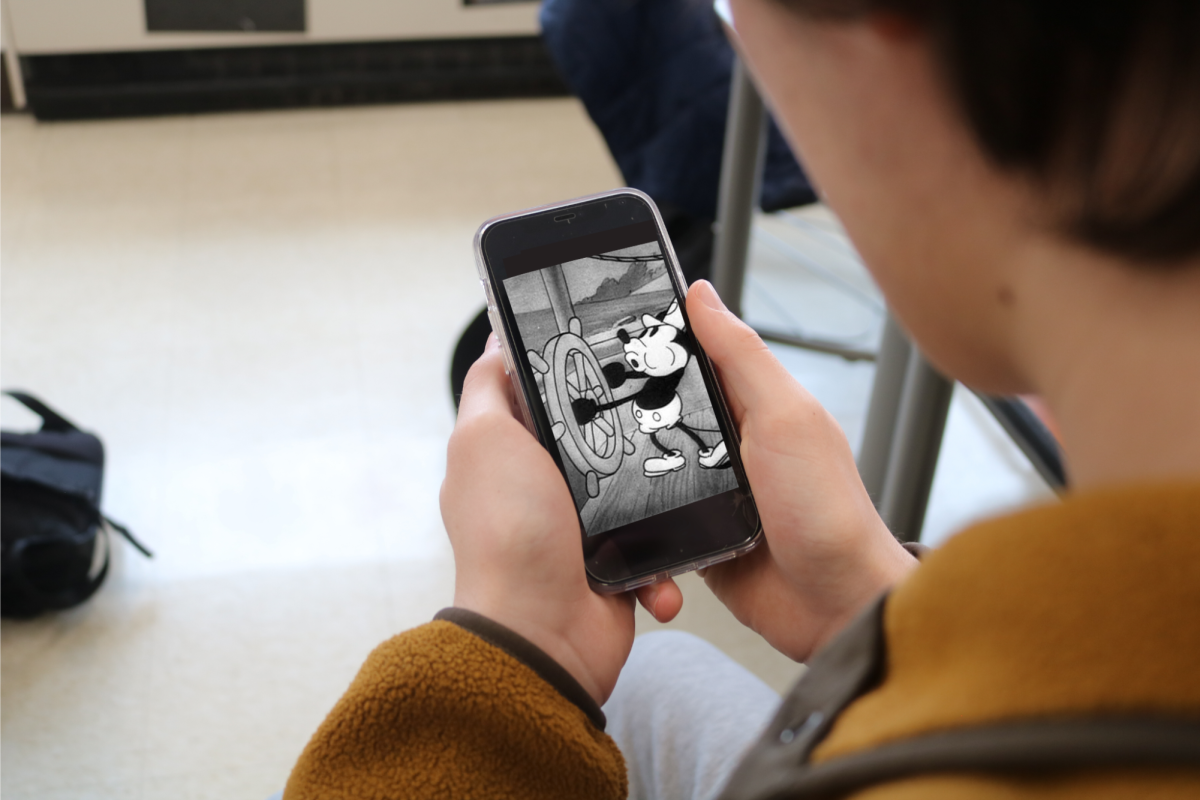
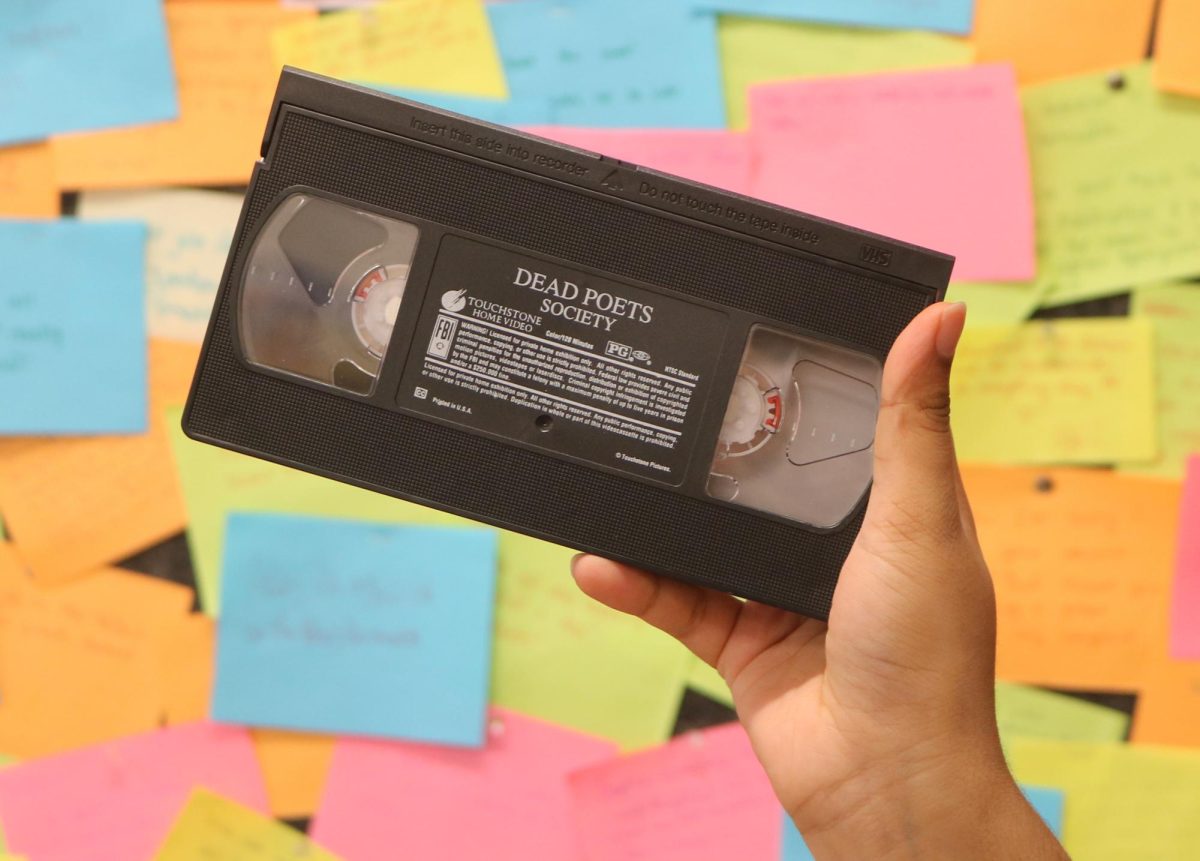


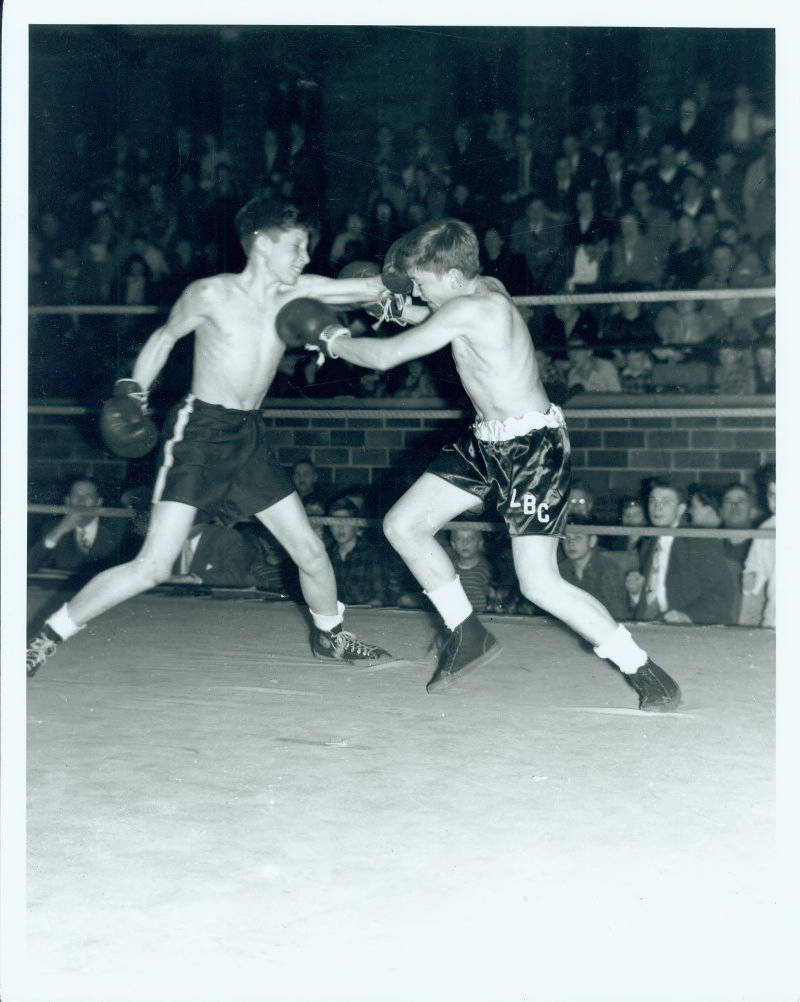
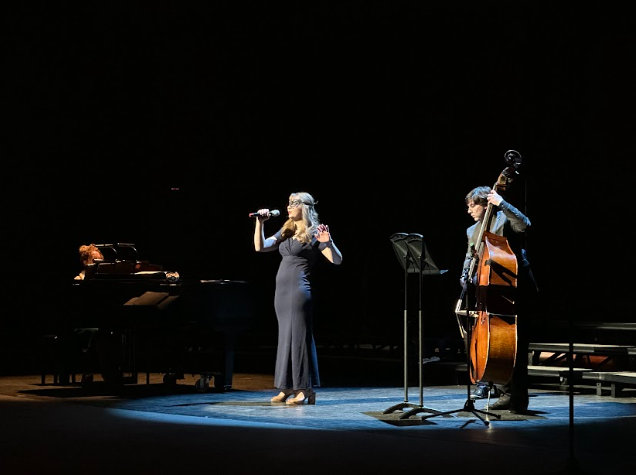

![Top Five Movies to Watch on Valentine’s Day [Spolier Alert]](https://www.lhsdoi.com/wp-content/uploads/2025/02/Screenshot-2025-02-12-9.59.23-AM.png)
